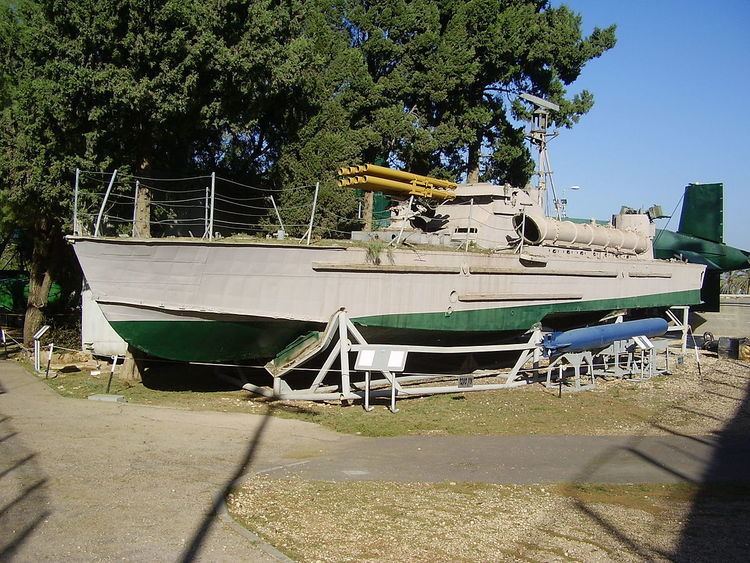Type Torpedo boat Beam 3.70 m (12 ft 2 in) | Length 19.30 m (63 ft 4 in) Draft 1 m (3 ft 3 in) | |
 | ||
The P 4 class torpedo boat (TB) were aluminum-hulled torpedo boats of the People's Republic of China's People's Liberation Army Navy. Based on the Soviet K-123 hydroplane design, they were armed with twin 14.5-millimetre (0.57 in) machine guns, and two 17-inch (43 cm) torpedoes. This class is currently considered obsolete, but was not completely retired from active service, being placed in reserve until the mid-1990s.
Contents
The P 4 torpedo boats consisted of two primary types; the K-123 type with radar, and B-123 type without. The Chinese-built units made the radar standard for all boats, and replaced the original 12.7-millimetre (0.50 in) heavy machine guns onboard those former Soviet boats delivered to China with 14.5-millimetre (0.57 in) heavy machine guns.
The PLAN transferred this class to the naval militia for training purposes, and because these boats are kept and maintained on land due to their small size, they are normally in better condition than larger units that are kept in the reserve and mothballed fleets.
In addition to naval militia training duties, some of the surviving units have been converted into target drones, and have thus been returned to active service, functioning as minor support auxiliaries. As with the Yulin-class gunboat, the drone is controlled by larger converted gunboats such as the Shantou, Huangpu, and Beihai classes.
P 6-class torpedo boat
The P 6-class torpedo boat ("Project 183 Bolshevik") is a development of the P 4-class TB originally intended to be a successor of P 4, but it instead complemented P 4 when both types served with each other. As with the P 4 class, the P 6-class also comes in two versions, one with radar and the other without, 183T and 183 respectively. The P 6 class TB is larger than the P 4-class TB, with its size increased by 3 times and being more heavily armed, with two 21-in torpedoes replacing the 18-in torpedoes of the P 4-class, and twin 25 mm gun mounts replacing the 14.5 mm gun mounts of P 4-class.
600 nmi (1,100 km; 690 mi) at 33 knots (61 km/h; 38 mph)
P 8-class torpedo boat
P 8-class torpedo boat is another development of P 6-class TB, which is a P 4-class with hydrofoil added. Although only a small number was built for the Soviet Navy, a large number of its derivative was built by Chinese as Type 025-class torpedo boat.
P 10-class torpedo boat
P 10-class torpedo boat was an experimental boat based on P 6-class, and it was a P 6-class powered by gasturbine engine to evaluate the its feasibility of gasturbine engine for maritime use.
